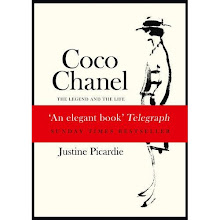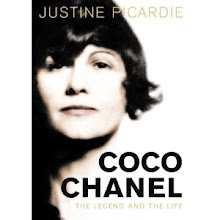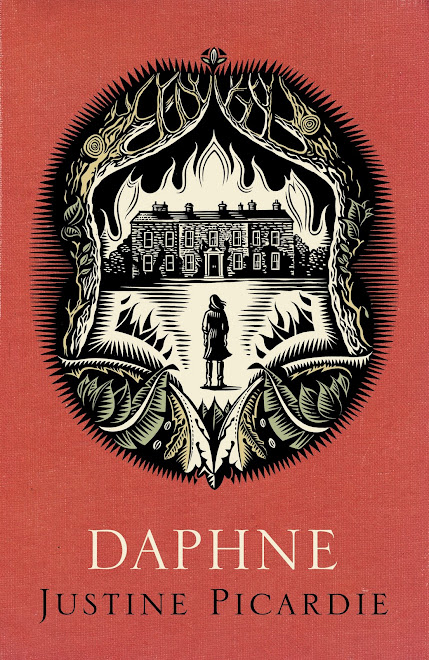
I'm really looking forward to returning to Port Eliot at the end of July for the
Literary Festival. I'll be talking about 'Daphne', and walking in the estate, which is the closest you can get to Manderley, I think.
Just wrote a piece for the
Times in their series of Literary Walks; the others are definitely worth reading: Ian Rankin in Edinburgh, Juliet Barker on
Bronte country, and Andrew Lycett on
Dylan Thomas's Wales.
Anyway, here's mine:
‘We can never go back again, that much is certain,’ wrote Daphne du Maurier in ‘Rebecca’, a novel that is nevertheless about returning (of the dead to the living, and to the places where they still live), which has inspired legions of devoted readers to retrace Rebecca’s footsteps. I count myself as one of those fans, and in the course of writing a book about Du Maurier – and Menabilly, the mysterious Cornish mansion that inspired Manderley – I have been walking the same paths as she did, trying to follow the shadows of ghosts that haunt her landscape.
It is not easy to pin down Daphne du Maurier, the most secretive and reclusive of women; which is perhaps why she fell in love with Menabilly, a house on the south coast of Cornwall, hidden from the outside world and encircled by dense forest; or as she described it, ‘a jewel in the hollow of a hand’. Du Maurier first discovered Menabilly in the autumn of 1927, when it was abandoned and falling into ruin. She was 20, the second daughter of a handsome matinee idol, Sir Gerald du Maurier, and still living at home in Cannon Hall, a grand Hampstead house that hosted the celebrated theatrical stars of the era. But Daphne had already declared that her heart belonged to Cornwall, soon after her father bought Ferryside, a waterside house in Boddinick, sheltered on the wooded side of the Fowey estuary where the du Mauriers holidayed with their friends.
Fowey has become more fashionable than it was eighty years ago – there are chic little shops and boutique hotels overlooking the harbour – but it still has a fairytale air, its narrow streets curving beneath the towers of Place, the gothic mansion owned by the Treffry family that stands on a hill, surrounded by high stone walls. This is the nearest town to Menabilly, and Du Maurier devotees arrive here for its annual literary festival, many of them hoping for a glimpse of the setting of ‘Rebecca’; though the mansion is as inaccessible as it was when the writer first set out to find it, as a trespasser who lost her way. Menabilly remains closed to the public now, as it has always been – it is the home of the Rashleigh family, who have owned the estate for the last 800 years – but there is a footpath at the margins of the grounds, crossing close to the long, overgrown drive that Du Maurier was to describe in the opening of ‘Rebecca’ (‘a muddied path, leading nowhere, and the shrubs, green no longer but a shrouding black…’).
The overgrown rhododendrons and tangled brambles still beat back the most intrepid of intruders, just as they did when Du Maurier made her initial attempt to follow the serpentine twists of the drive; but she eventually found her way to Menabilly by the coastal path, clambering up from the rocky beach that she was to make famous as the place where Rebecca drowned and rose again. Du Maurier fell in love with the house in an instant, yet with a passion that would last a lifetime; for Menabilly appeared to her to be “the sleeping beauty of the fairy tale, [waiting] until someone should come to wake her... She was, or so it seemed to me, bathed in a strange mystery. She held a secret – not one, not two, but many – that she withheld from many people but would give to one who loved her well.”
If Du Maurier saw herself as waking Menabilly, then the house also awakened something within her. It provided the atmospheric Cornish setting for subsequent period novels – ‘The King’s General’ and ‘My Cousin Rachel’ – and when Hitchcock directed the film version of ‘Rebecca’, he observed that Du Maurier’s story was of two women, one man, and a house, and of these four central characters, the house was the dominant presence.
It therefore seems appropriate that Du Maurier used the money she made from ‘Rebecca’ – a book which still attracts legions of new fans, over seventy years after its publication in 1938 – to lease Menabilly in August 1943; and although she could never make it her own (it was entailed to the Rashleighs, who reclaimed it in the 1960s), much of her fortune went on renovating it, to keep its walls safe from the strangling ivy and encroaching fingers of wild creepers. Thus Menabilly was the house that Rebecca rebuilt, and also the place to which Rebecca returned, when Du Maurier felt herself to be haunted by the ghost of her famous fictional creation; an episode in her life that seems powerfully emblematic of her ability as a writer to blend fiction and fact into a landscape that readers can go back to, over and over again.












